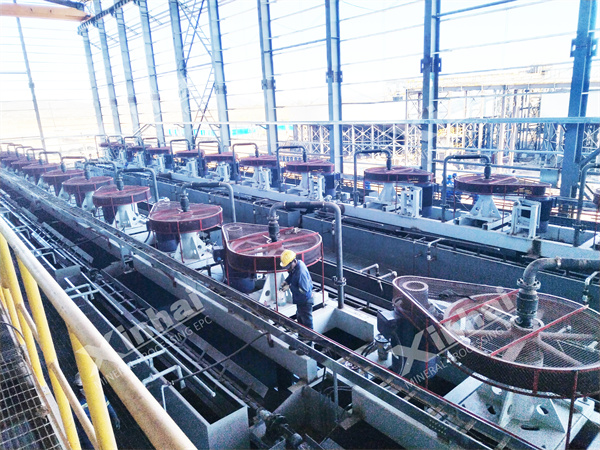Copper-lead-zinc oxide ore is the raw material for manufacturing important metals such as copper, lead, and zinc, and is widely used in many fields such as electronics, chemicals, and building materials. However, the mineral composition of copper-lead-zinc oxide ore is complex and the oxidation state is diverse, which creates difficulties for ore dressing. This article introduces the characteristics, process flow, and optimization and innovation of ore dressing technology of copper-lead-zinc oxide ore.
(1)Complex ore composition
Oxidized copper-lead-zinc ore usually contains multiple types of ores, such as oxidized copper ore, oxidized lead ore and oxidized zinc ore. The oxidation degree of these ores is different, which makes it difficult to determine the beneficiation method and process parameters.
(2)Diverse ore composition
Copper-lead-zinc oxide ore contains not only main metal elements such as copper, lead and zinc, but also other elements such as iron, sulfur, gold and silver. The presence of these associated elements increases the complexity of mineral processing, but also improves the comprehensive utilization value of the ore.
(3)High oxidation rate
The oxidation rate of oxidized copper, lead and zinc ores is usually high, which makes the beneficiation of the ore more difficult. Ores with high oxidation rates require special processes, such as sulfide-xanthate flotation, to improve the recovery rate of metals.

(1)Crushing and grinding
Crushing and grinding are the primary links in the mineral processing process. Their purpose is to crush the ore to a suitable particle size to create conditions for the subsequent mineral processing process. For copper oxide ore, the grinding fineness is usually controlled at -200 mesh, accounting for more than 80%, in order to improve the recovery rate of copper.
(2) Gravity separation process
Gravity separation is a mineral separation method that uses the density difference of different minerals in the ore to separate them. In the beneficiation of copper-lead-zinc oxide ores, gravity separation is mainly used to process ores with large density differences. Jigs and shaking tables are commonly used gravity separation equipment. The advantages of gravity separation are simple equipment, convenient operation and low cost, but its mineral separation efficiency is relatively low, and it is usually used as a pre-selection or roughing process.
(3) Flotation process
Flotation is one of the most commonly used methods in the beneficiation of copper-lead-zinc oxide ores. Its principle is to use the difference in physical and chemical properties of the mineral surface and the effect of flotation agents to make useful minerals selectively adhere to bubbles, thereby achieving mineral separation. Flotation agents include collectors, frothers and regulators.
The flotation process usually includes three steps: roughing, scavenging and concentrating. Roughing is the preliminary separation of useful minerals and gangue minerals, scavenging is the re-floating of roughing tailings to improve the recovery rate of useful minerals, and fine separation is the multiple flotation of roughing foam to improve the grade of useful minerals.
(4) Leaching process
The leaching process is mainly used to treat copper oxide ores. Its principle is to use chemical reagents to react with copper in the ore to dissolve copper in the solution, and then extract copper through subsequent processes. Common leaching methods include acid leaching and ammonia leaching.
Acid leaching is the reaction of acidic reagents such as sulfuric acid with copper oxide in the ore to generate soluble copper salts. Ammonia leaching is the reaction of ammonia water and ammonium salts with copper oxide in the ore to generate soluble copper-ammonia complexes. The key parameters in the leaching process include leaching time, temperature, pH, etc.
(5) Other auxiliary processes
In addition to the above-mentioned main mineral processing processes, there are some auxiliary processes that play an important role in specific situations. For example, magnetic separation can be used to separate magnetic minerals in ores, such as iron minerals. The electrostatic separation process uses the electrical differences of minerals to separate them, and is suitable for processing certain special ores. These auxiliary processes work in synergy with the main mineral separation process to further improve the mineral separation effect.